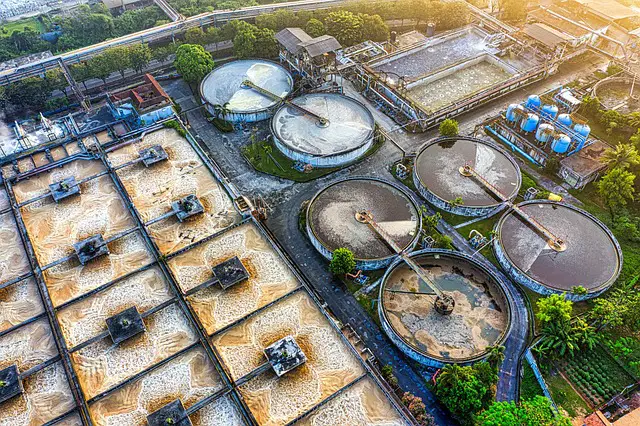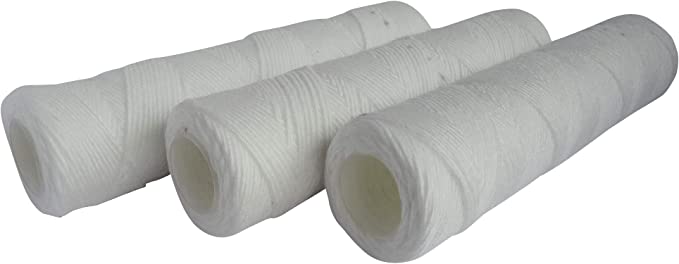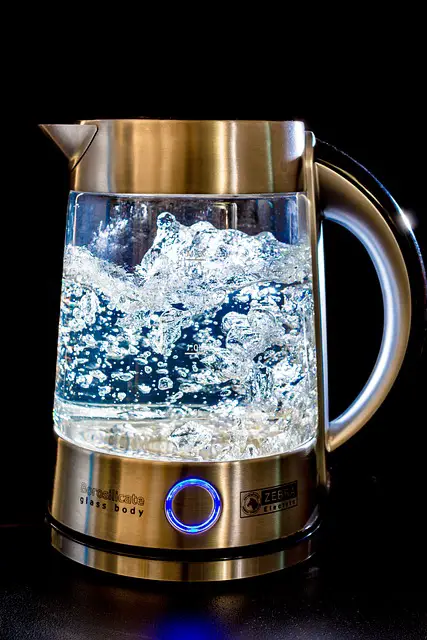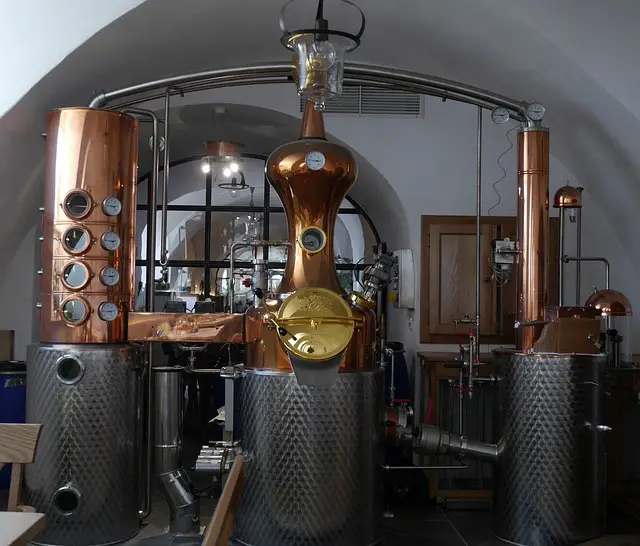The idea of improving water quality is not something new, humanity has been doing it for millennia, I remember doing basic experiments as a kid and noticing the way certain processes interacted with certain impurities. When it comes to improving water quality, the term that is generally applied is water treatment, a broad all-encompassing term to include any process that theoretically improves the water quality. Under the umbrella description of water treatment, there are two terms that often get thrown around; Filtration and Purification, we know they are not synonymous, but the slightly more confusing question is, Where does filtration stop and purification start? Is there an overlap between the two? This question came into my head when I was discussing this website with a friend, and to be honest I didn’t have a straight answer, so as I always do, I hit the books and came up with this comparison article.

Water filtration refers to the separation of insoluble contaminants from water, whereas purification is focused on neutralizing microscopic and soluble impurities. Filtration is physical, where a barrier stops oversized particles from passing, whereas purification refers to both physical and chemical processes.
Strictly speaking, there are significant differences between filtration and purification, in some cases the two overlap and even some cases where the industry norm is to call something filtration which is in fact purification and vice versa. The breakdown of the article is a purist’s description of both terms along with the various types of each, followed by clarification of the main differences and finally the significant overlap that exists between the two.
What Is Water Filtration?
Originating from the medieval Latin word filtrum which referred to the material felt, a fabric that is made by pressing and condensing natural fibres together. The link between today’s definition of filtration with the word origin is apparent in that many fabrics have been used to physically separate contaminants from the media they are contained in, be it air, water or some other liquid or gas. Perhaps the first formally recognized filter was made of felt? We can add that to the long list of questions that cannot be answered!
Water filtration is the physical separation of contaminants from water with the use of a mesh-like barrier, more colloquially known as a filter. The filter stops contaminants from passing by being made up of openings of a certain size, of which oversized particles cannot pass.

Filtration of water can be done through anything that restricts the passage of certain-sized objects, be it a bucket of sand that stops anything that can’t fit through the gaps between grains or a 5-micron cartridge designed to remove borderline microscopic material from water. The various types of water filtration are vast and generally speaking each is designed for a given purpose based on available materials. For instance, there is no point in using a 20-micron cartridge filter to remove rocks, mud and leaves from river water as it will instantly block up and cease to function. In the same breath, there’s no point using a sand filter to prepare water for reverse osmosis as the RO membrane will be instantly damaged and blocked with oversized particles.
What Are The Different Types Of Water Filters?
As alluded to in the previous paragraph, practically anything can be used as a filter if you are being creative enough. Some sources of information falsely state that processes such as ionization, softening and UV radiation should be classed as filtration however none of these relies on the physical separation of particles, so therefore cannot be referred to as water. For the purposes of a succinct article, we will stick to the main types to avoid needless confusion starting from the most coarse filtration to the finest.
Mesh Filters
Mesh filters refer to a broad term, encompassing anything that has visible openings designed to filter out oversized contaminants. Examples of mesh filters are gutter guards, mesh coverings put over gutters designed to stop leaves and other objects from being drained into the storage tank or drain covers seen along footpaths to stop all sorts of oversized objects falling into drains and flowing off into the sewerage system. A common mesh filter a lot of us would see daily is a drain in the kitchen sink that catches food waste, less common in the USA where food processors take care of any oversized bits of food!

Sand Filters
Also referred to as sediment filters, these filters rely on forcing water through a container of sand or another sediment type, with any oversized particle being caught between grains. There is a huge variation with sand filters, with some relatively organized options like pool filters with sand of low variance packed tightly in a generally round container. On the other end of the spectrum, a garden bed can be used to filter water, as is often done when reutilizing household wastewater aka grey water filters.
If you are keen to hear more about the various types of sand filters and even DIY greywater filtration systems, I encourage you to have a look at my article What Are Sand Filters Used For? 4 Surprising Uses!
Fabric Filters
Once again, this is an incredibly broad term encompassing anything that involves using cotton, wool etc to filter water, generally speaking, though the term refers to fabric cartridge filters like the ones on the right, a generic option from amazon used to filter anything above 20 microns from a water supply before it gets purified.

Ceramic Filters
Quite a versatile filtration system, essentially a sand filter albeit with much smaller gaps between grains! Ceramic filters work by utilizing the tiny pores between grains, they are very effective at removing sediment as well as some bacteria. Ceramic filters can come in the form of jugs with inbuilt filters but also on-demand type systems. Ceramic filters are the first of the filtration methods that theoretically could be perceived as purification due to their ability to remove some soluble particles from water, however, due to their reliance on physical separation they are still technically filters.
Activated Carbon
A very popular filtration system due to its ability to improve water taste, particularly when heavily chlorinated, they also fall into the group of filters that could be purifiers! Carbon filters take advantage of activated charcoal’s immense internal surface area (1g has the equivalent of 1000 square metres of internal surface area.) By forcing the water through such a large surface area, combined with carbon’s intermolecular forces the activated carbon attracts and bonds with impurities as they pass through. Activated carbon filters are effective at reducing some heavy metals, chlorine, and harmful fibres (ie: asbestos) although they will clog up rapidly if not fed relatively clean water, to begin with. Activated Carbon Filters come in the form of portable jugs, on-demand systems or even a simple lump of charcoal in a bottle!

Reverse-Osmosis
By far the most technical of all filtration techniques, reverse osmosis (RO) is a technical process that sits on the precipice of purification. RO involves pumping water through a semi-permeable membrane at extremely high pressure to remove ALL impurities from the water, returning a pure water stream and rejected brine waste stream. Reverse Osmosis is also the most common form of desalination worldwide, making it in some ways the ultimate water treatment. Calling it filtration may be a technicality, but if I have to call it one or the other, I am going with filtration as it does rely on physical separation. You can technically get portable RO units, however, generally speaking, to do RO at any scale you require a considerable under-sink setup or a gigantic desalination plant!
If you are keen to learn more about the technicalities involved with reverse osmosis, I encourage you to read my article How Many Stages Are There In Reverse Osmosis? It Depends!
What Is Water Purification?
Water purification is the process of unwanted impurities in water, be they organic or inorganic soluble or insoluble, the process of water purification can involve physical, chemical and even electromagnetic processes.
More specialized than filtration, water purification is generally used to attain an extremely specific quality of water, whether that be for consumption or industrial processes. Purification processes will typically be performed after some form of filtration, this is due to increased efficiency and minimized wear and tear on the purification equipment. Purification will almost always have some form of specific disinfection involved, whether it is performed before during or after the main purification process.
Are Purification And Disinfection The Same Thing?

Disinfection is the stage of purification that refers directly to the neutralizing of harmful bacteria and viruses in the water, without necessarily removing them from the water. Disinfection can come in the form of boiling, the addition of chemicals and even the use of ultraviolet light. Purification refers to processes that ultimately reduce impurities in the water, irrespective of whether they are organic or inorganic.
What Are The Different Types Of Water Purification?
The interesting thing with water treatment is that you can combine multiple processes together in series to suit your particular situation, it is not a one size fits all approach. Incorporating water disinfection techniques into the purification umbrella leads us to create quite a considerable list, pure disinfection methods are placed at the top of the list slowly changing through to complete purification. The interesting thing with water treatment is that you can combine multiple processes together in series to suit your particular situation.
Chlorination
Chlorination is a method of water disinfection using chlorine to oxidize and eliminate microorganisms from a water source. It is widely used globally for drinking water and general use largely due to its scalable nature and longer-term disinfection properties.
Chlorination is a pure disinfection process, it will have zero impact on the inorganic contaminants in the water, however, it does have long-lasting disinfection properties which partially explains its widespread adoption around the globe. If you are interested in a more comprehensive guide that explains the process of chlorination, its history and its role in disinfecting water worldwide, have a look at my article What Is Chlorination: A Simple Explanation.
Boiling
The tried and true technique, if in doubt, boil it! Due to the fact that NEARLY all microorganisms, bacteria and viruses cannot survive sustained periods above 100 degrees Celsius (212 Fahrenheit for those Americans reading), simple boiling water you are unsure about is a great way to reduce any potential issues from organic contaminants. Like chlorination, boiling neutralizes organic contaminants without removing them, boiling will not help at all with inorganic impurities like metals and chemicals, unless of course you boil it dry and collect the steam, known as distillation which is further down this list!
Ultraviolet Radiation

Ultraviolet radiation purifies water by disrupting the DNA of pathogens and bacteria, preventing their reproduction. UV energy is able to pass through cell membranes and protective layers, directly interacting with the pathogen’s DNA allowing its destruction without changing the composition of the water.
Like boiling and chlorination, UV treatment neutralizes bacteria and other microorganisms without removing them from the water, it also has zero impact on inorganic impurities that pass through the process. The exact process of how UV light disinfects water is quite complex, yet interesting, if you are interested in a concise explanation of the process, you should have a look at my article How Does UV Water Purification Work? A Simple Explanation.
Ozonation
Ozonation is the process of oxidizing and then removing dissolved metals, organic material and microorganisms from water. Ozone is a strong oxidizing agent which has the ability to convert dissolved contaminants into insoluble compounds which are released as gas or easily removed through post-filtration.
Despite ozonation being largely a disinfection technique, it will break down contaminants both organic and some inorganic although the ozonation itself does not remove them after neutralization, some form of post-filtration is required.
The process of ozonation is quite complex, if you would like to get a deeper understanding of ozone, how its created and ultimately how it helps disinfect water, I wrote an article What is ozonation, and how does it help purify water?
Reverse Osmosis
If you read the filtration section of this article, you may remember reverse osmosis being present, that is because it is 100% filtration whilst also 100% being a purification technique. Reverse osmosis along with distillation are the only two true purification techniques that have the standalone ability to remove all impurities from water with the exception of a few chemicals and hydrocarbons, both organic and inorganic, the fact RO achieves this with the use of a filter makes it unique.
Distillation
Distillation is an ancient concept often associated with the production of alcohol, where a liquid is boiled and the fumes are captured and condensed (cooled) until they turn back into a liquid which is theoretically close to pure.
As is the case with water, you can boil contaminated water, collect the steam and cool it back into liquid water of high purity, straight distillation will not remove 100% of impurities as some chemicals and hydrocarbons will also be captured, however, a process of fractional distillation theoretically has the ability to remove 100% of impurities. Fractional distillation refers to holding the water at certain boiling points on the way to 100 degrees celsius in order to separate off any other liquid contaminants, before capturing the steam at 100 degrees ensuring its purity.

What Is The Difference Between Filtration and Purification?
After a deep explanation of filtration, purification and even touching on the topic of disinfection, we come to the question on everyone’s lips, what is the difference between filtration and purification? If you have read the entire article up to this point, you will have probably already deduced the difference from the explanations and examples given, however, a succinct answer is necessary.
Where water filtration strictly refers to the physical separation of insoluble contaminants from water by capturing any particles over a given size on a filtration medium. Purification refers to the neutralization and/or removal of impurities in water, generally, of microscopic nature. Purification can be achieved by any type of process be it physical like reverse osmosis, chemical like ozonation or by electromagnetic means like ultraviolet filtration whereas filtration relies on 100% physical separation.
Distillation or more importantly, fractional distillation is the ultimate and only purification technique that requires zero additional stages to completely purify water. However, all other filtration and purification methods rely on at least some additional step(s) be it before or after to ensure the ability to convert polluted water into potable drinking water in an efficient manner.
Sources:
https://www.sciencedirect.com/topics/chemistry/filtration
https://www.sciencedirect.com/topics/engineering/fabric-filter
https://www.sciencedirect.com/topics/earth-and-planetary-sciences/activated-carbon
https://www.sciencedirect.com/topics/chemical-engineering/reverse-osmosis
https://www.britannica.com/topic/water-purification
https://letsdowater.com/how-does-uv-water-purification-work-a-simple-explanation/
https://letsdowater.com/what-is-chlorination-a-simple-explanation/
https://letsdowater.com/what-is-ozonation-and-how-does-it-help-purify-water/
https://letsdowater.com/what-are-sand-filters-used-for-4-surprising-uses/
https://letsdowater.com/how-many-stages-are-there-in-reverse-osmosis-it-depends/
https://www.cdc.gov/healthywater/drinking/public/water_disinfection.html#:~:text=To%20prevent%20contamination%20with%20germs,Salmonella%2C%20Campylobacter%2C%20and%20norovirus.
http://www.chem.rochester.edu/notvoodoo/pages/purification.php?page=fractional_distillation


